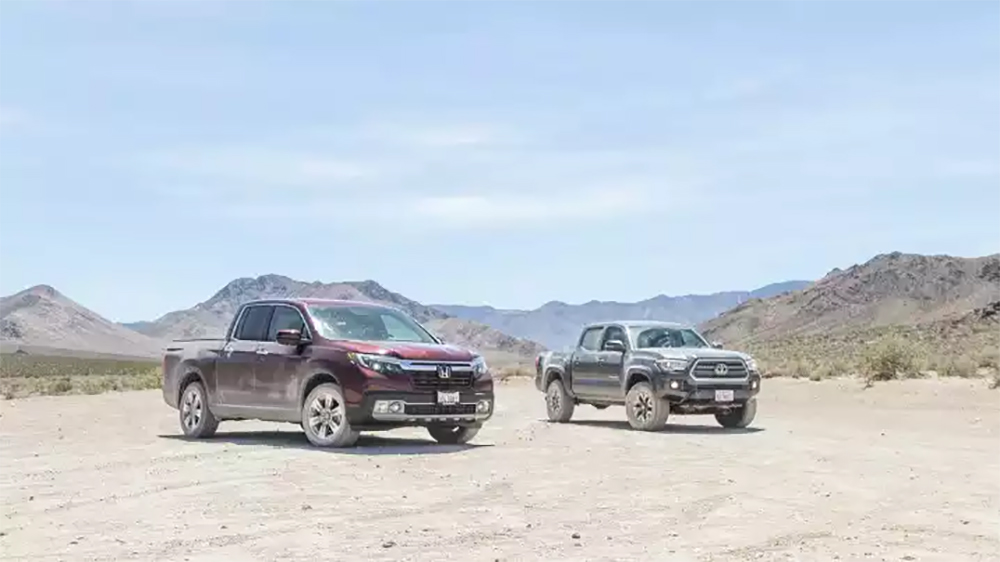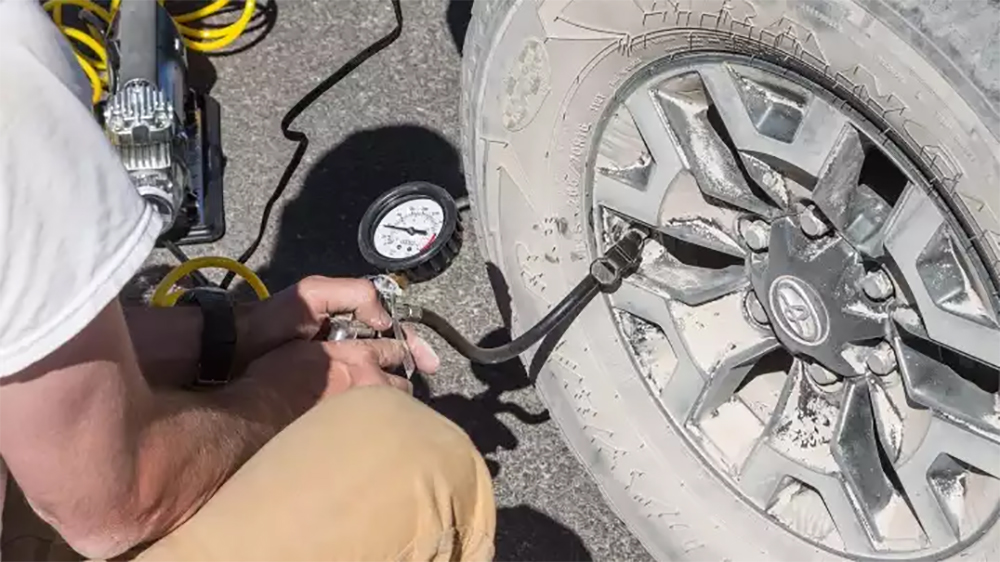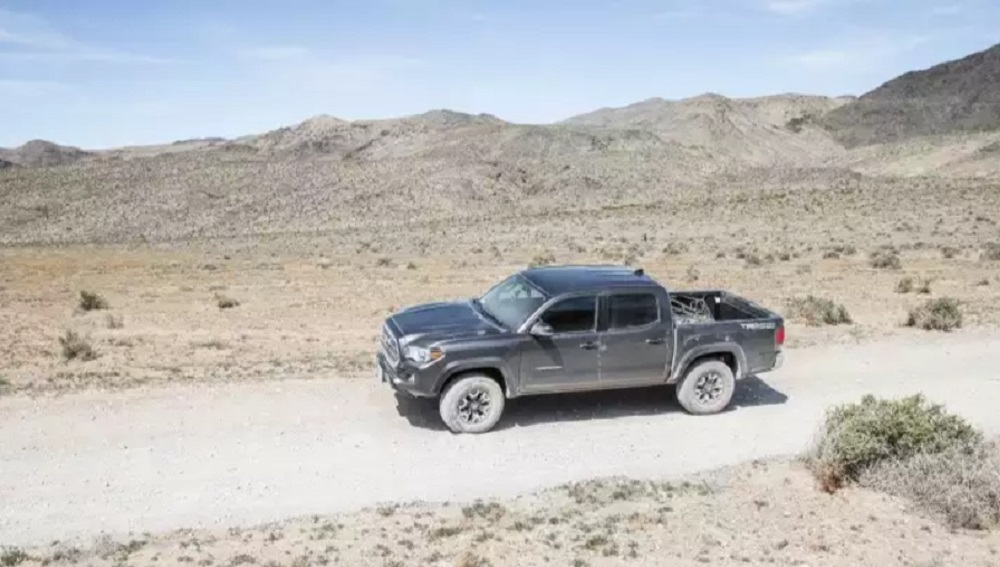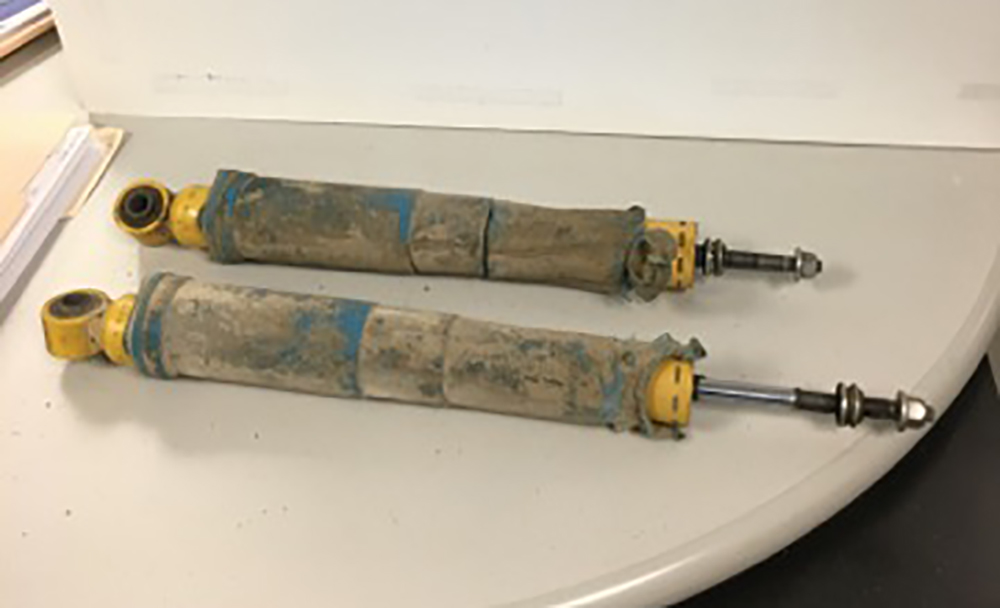Edmunds Torture Tests Tacoma TRD Off Road, Blows Shocks

But was the test done fairly and did the shocks really turn out that bad?
Death Valley is a pretty forbidding place with vast stretches of desert, hot temperatures and little relief from the unrelenting sun. It proved too much for the Toyota Tacoma Off-Road used as a back-up vehicle on a recent torture test conducted by Edmunds. Blown shocks and dripping oil onto the wheel axles paint a pretty damning picture of Toyota’s reliability. But, was the test done fairly and did the shocks really turn out that bad? YotaTech looked closer at it and here is what we found.
The Test
Dan Edmunds, director of vehicle testing at Edmunds (no relation), initially set off to see how the new 2017 Honda Ridgeline would fair on the washboard road to the Racetrack Playa located 27 miles into Death Valley National Park. The plan was to replicate a similar trip done by a prior editor at Edmunds.
Basically, that editor had taken the prior-generation Honda Ridgeline out to this race track and discovered on his way back that he blew the shocks on the truck.

When the new truck came out, Edmunds talked with Honda engineers about the prior incident and they said they had collected those shocks and engineered the new truck with amplitude reactive dampers to handle the abuse.
Edmunds (pictured) then decided to see if this was true and started planning the trip. Once others heard about it, the interest grew and they decided to use a 2016 Toyota Tacoma TRD Off-Road and a 2017 Nissan Titan PRO-4X — both long-term loaners — as support vehicles.
Everything was going fine until…
“One guy had dropped back and we didn’t know where he was,” Edmunds tells us. “We figured we would pull over and wait. I thought I would go over and check out the Tacoma and Ridgeline mainly because we smelled something. It seemed like it was coming from the Tacoma.
“I really didn’t expect to see much,” he continues. “Then, I stuck my head in (under the rear tire) and I was totally gobsmacked. I couldn’t even see the boot and I really didn’t know what I was seeing there for a few minutes. There was oil everywhere and the boot had melted to the point that it was telescoped over the shock body. I could just see the rod, and a chunk of the seal was missing.”
Completely taken by surprise over the damage, Edmunds made the best of the situation by airing down the tires and gently driving both the Tacoma and the Titan back home. The Honda Ridgeline did not have the same shock damage.

Are the Shocks to Blame?
This trip caused a considerable amount of response from Toyota Tacoma fans and off-road fans in general. One of the largest criticisms of the trip is the question of why the tires weren’t aired down. This is a pretty standard thing that off-road drivers will do to give relief to the shocks.
“I air down when I go off roading all the time like a lot of people do,” Edmunds explains. “I don’t know many people would consider a washboard dirt road off roading. This is a dirt road that has been graded, fairly well maintained. It is just washboard.
“Also, I don’t know many people who would air down,” adds Edmunds. “It is a pain. You have to put air back in, especially when you are 100 miles away from civilization once you get back on the pavement. The air in the tires is what bears the weight of the vehicle. If you are loaded down with gear and going 60 miles per hour on two-lane roads in Death Valley with fifteen pounds of air in your tire, this is not a good idea.”
There was another reason as well.
‘We could put shocks on every Tacoma that could withstand [Death Valley]. But the added weight and cost for a handful of times they’d be needed wouldn’t make sense.’
Edmunds, who initially worked on the TRD line up of trucks as the suspension engineer for Toyota at the Arizona Proving Grounds, said he approached this test like he would do when working for the automaker. They would assume the customer didn’t air down their tires and they would go out and test the vehicles.
“Also, many automakers’ manuals recommend that you don’t air down your tires because the air is necessary to maintain the load capacity of the tire,” says Edmunds.
Another reason for not airing down was to duplicate what the prior editor did with the first-generation Honda Ridgeline when he experienced shock damage. He didn’t air down then either.

Based on his background, he says the real fault is in the selection of the “skinny 36 mm shocks”– the smallest ones in Bilstein’s catalog. Those shocks handled the load of the first-generation truck, which was 850 pounds heavier than this new generation vehicles, Edmunds says.
“I was totally surprised Toyota was still using them,” adds Edmunds. “That didn’t really sink in until a day or two had passed. At the time, I was blown away this could happen on a washboard road.”
Thinking on it, Edmunds says he was thoroughly confused at first.
“Bilsteins, being monotube shocks, have single walls and they should be really good at rejecting heat,” he says. “Looking at the math, these washboard inputs are only about an inch tall, they are generally 16 to 18 inches apart. If you do the math, that’s 3,000 to 4,000 impacts before mile. That is a lot when you start turning that into more miles. Our entire trip was about a quarter million impacts.”
There was oil everywhere and the boot had melted
to the point that it was telescoped over the shock body.
As long as there is enough capacity, Edmunds adds, this isn’t an issue. However, this is the smaller of the two common Bilstein shocks and it just doesn’t have enough capacity to get rid of that heat. The larger one is a 46 mm.
“The larger 46 mm would hold 68 percent more oil, 28 percent more surface area for the heat to radiate out,” says Edmunds. “The 46 mm could certainly have kept up. It is a theory I’d like to test out.”
Finally, Edmunds points out that other off-road trucks have the larger 46 mm shocks like the Nissan Frontier and the prior-generation S-10 ZR2 – the original vehicle the TRD line of vehicles tested against.

Toyota Source Pushes Back
Toyota did not respond to our request for an official statement on the incident. However, an unofficial source from within Toyota told us that engineers were able to get the damaged shocks from the dealer Edmunds used to have the truck repaired.
After examining the shocks, they found the seals had blown out, but otherwise, they were in good shape. The blown seals were directly related to the long, washboard road, causing them to overheat. There is no disputing this fact.

However, our source pointed out that changing to the larger shock wasn’t a simple matter of swapping them. In order to meet ride and handling and safety requirements, putting the larger shocks on the truck would cause engineers to reinforce other sections of the truck to handle load differences. This adds cost, as does the additional expense of the larger shocks.
“We could put shocks on every Tacoma that could withstand that environment,” our source says. “But the added weight and cost for a handful of times they would be needed wouldn’t make sense for our customers, who would [have to] pay more.”
Individual owners can swap out the shocks since they don’t have to meet the broad ride and handling targets Toyota uses for the general public.
For Toyota, changing the shocks out and re-engineering the truck is a considerable expense just to avoid blowing shocks on this particular trip that only a small segment of Tacoma owners would actually drive on. Also, most owners of off-road Tacomas are either going to air down their tires (a cheap “fix” to the issue) and/or add upgraded off-road shocks anyway.
Building a more expensive truck to handle this one particular driving situation just doesn’t make business sense for Toyota.
In the end, the question remains: Is the shock failure a sign the Tacoma TRD Off-Road needs to be engineered better, or would a simple airing down of the tires be the more economical solution for Toyota Tacoma owners? Which side of the debate are you on? Let us know in the YotaTech forums.
For more on the results of Edmunds’ Tacoma TRD Off Road test, check out YotaTech writer Tim Esterdahl’s podcast interview with Dan Edmunds on Pickup Truck Talk.
Photos: Edmunds
